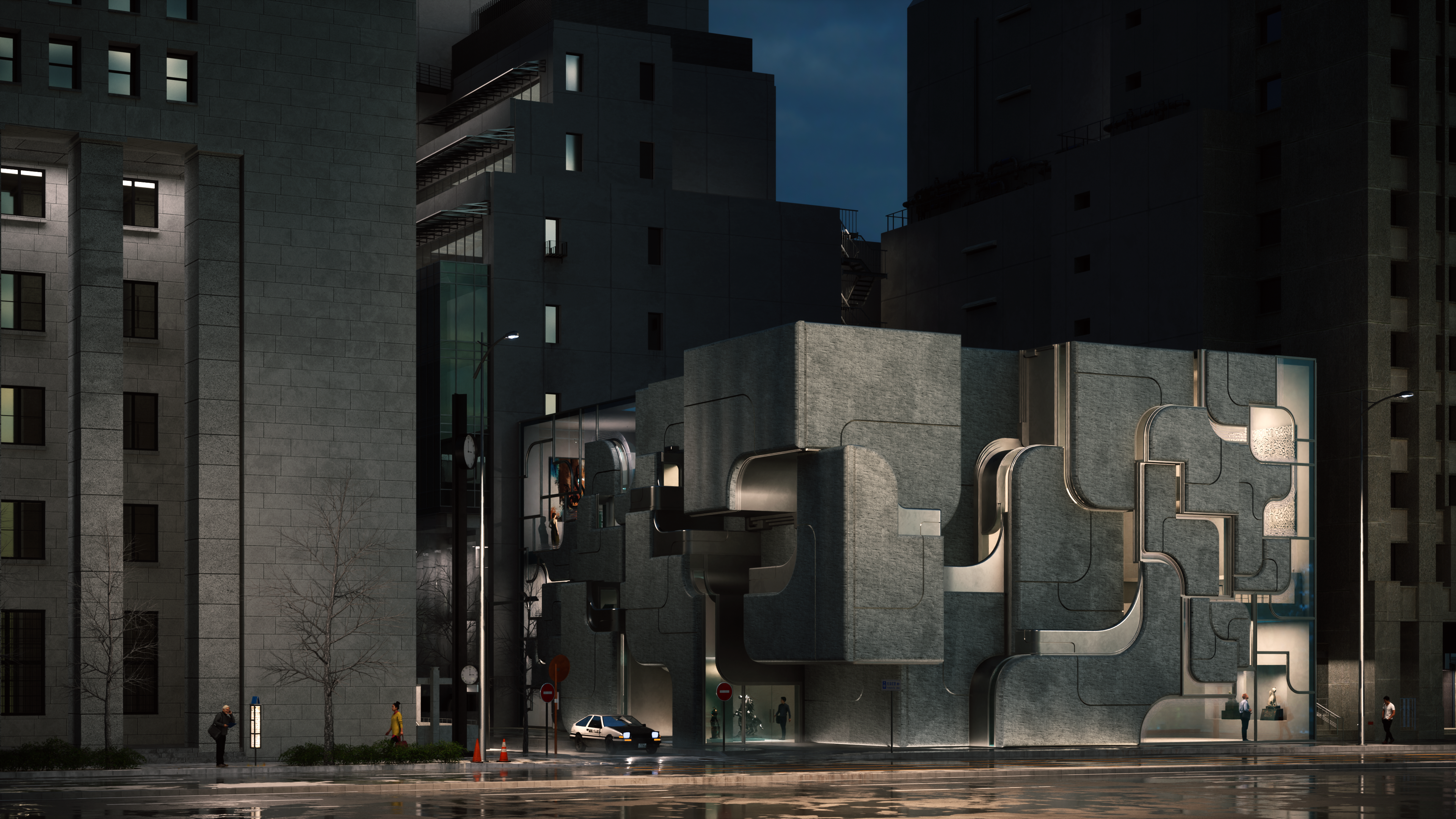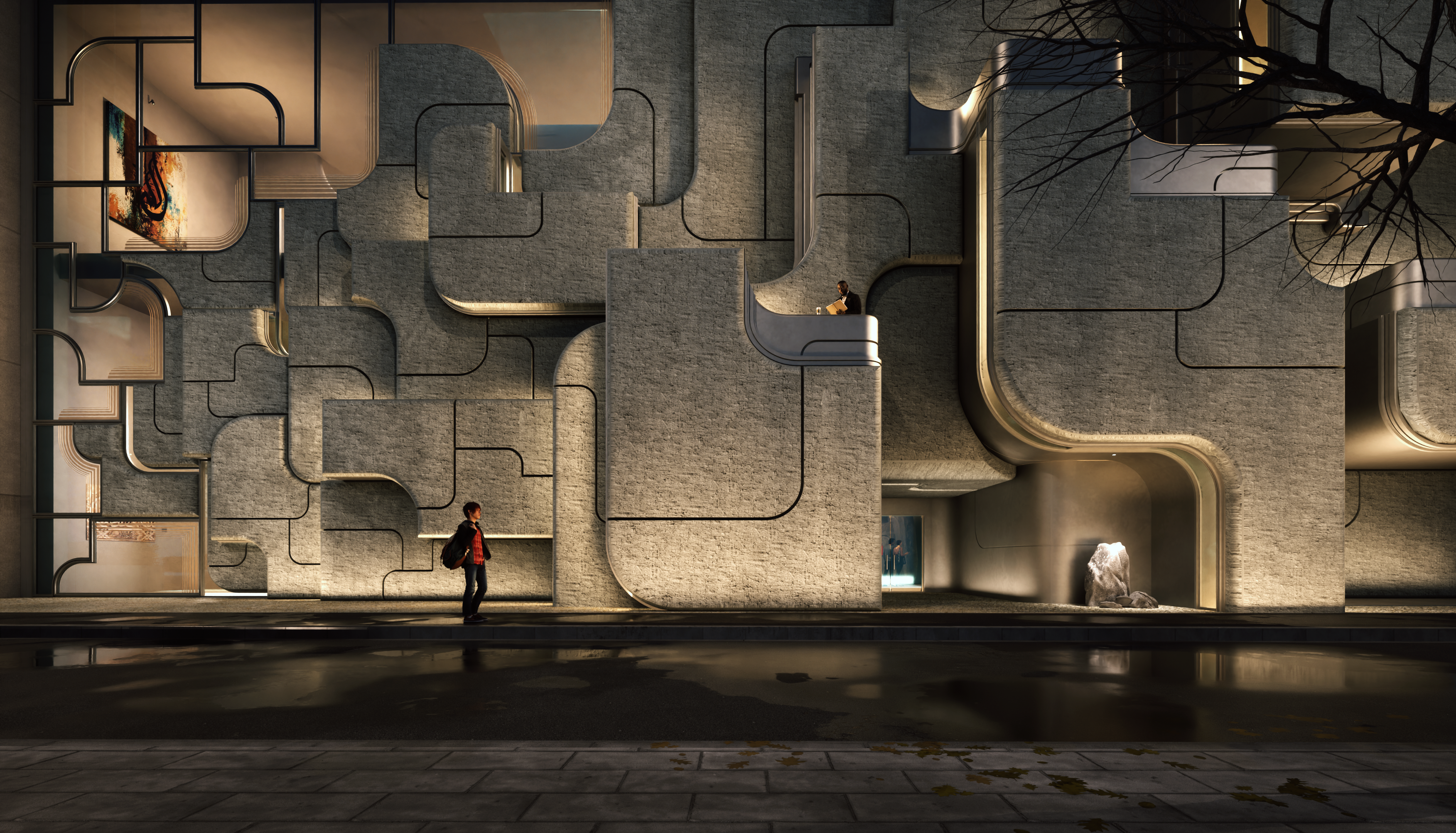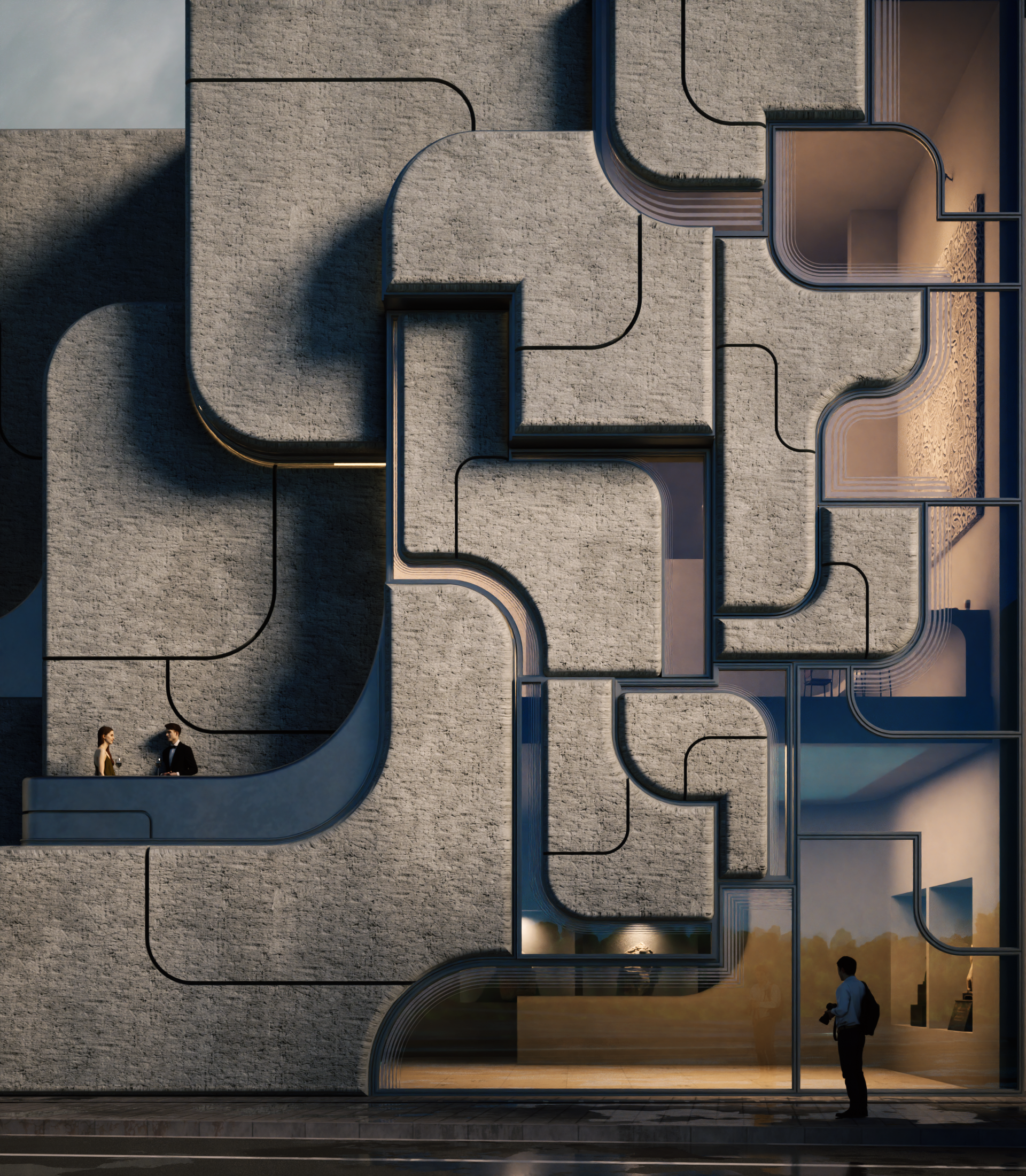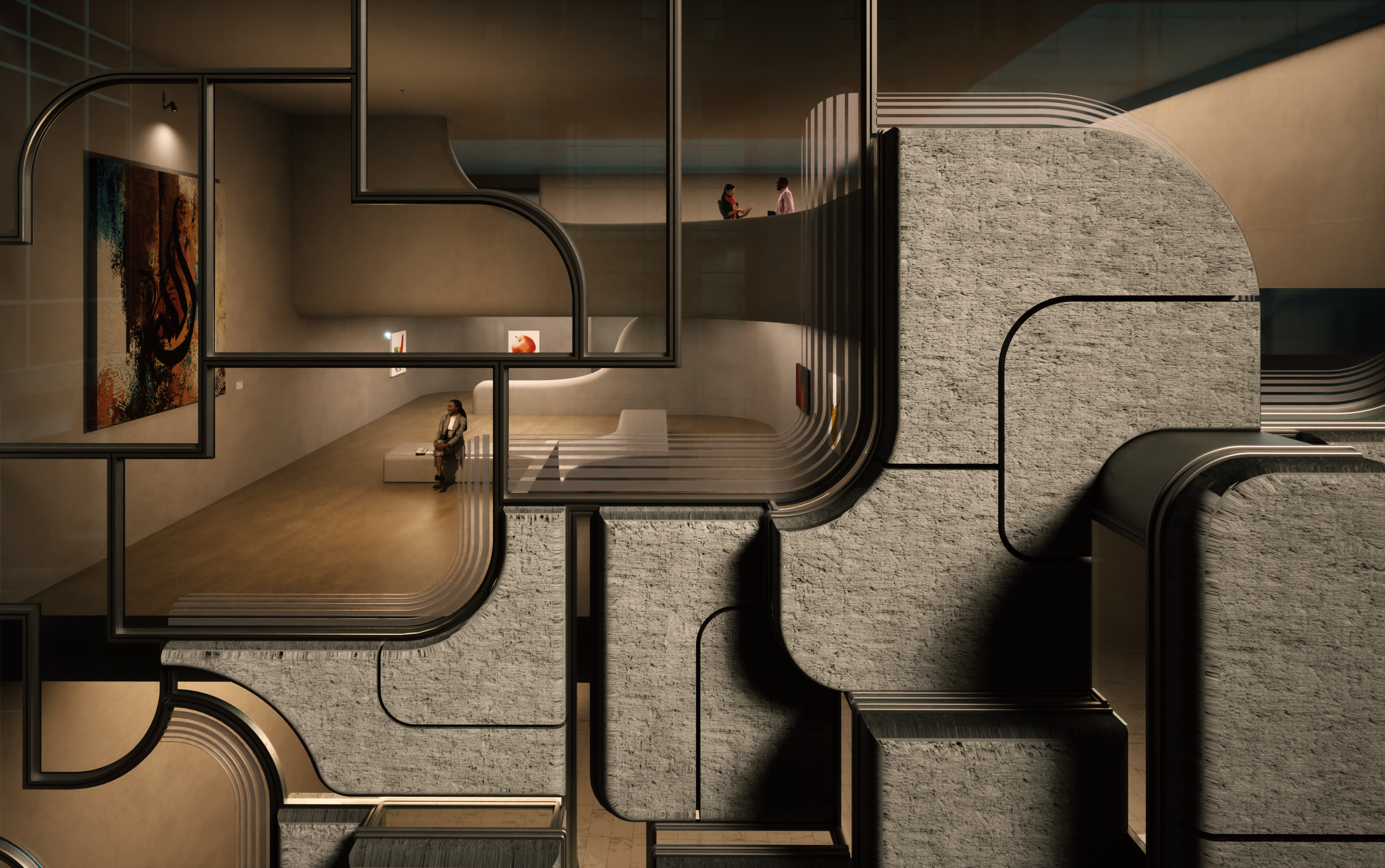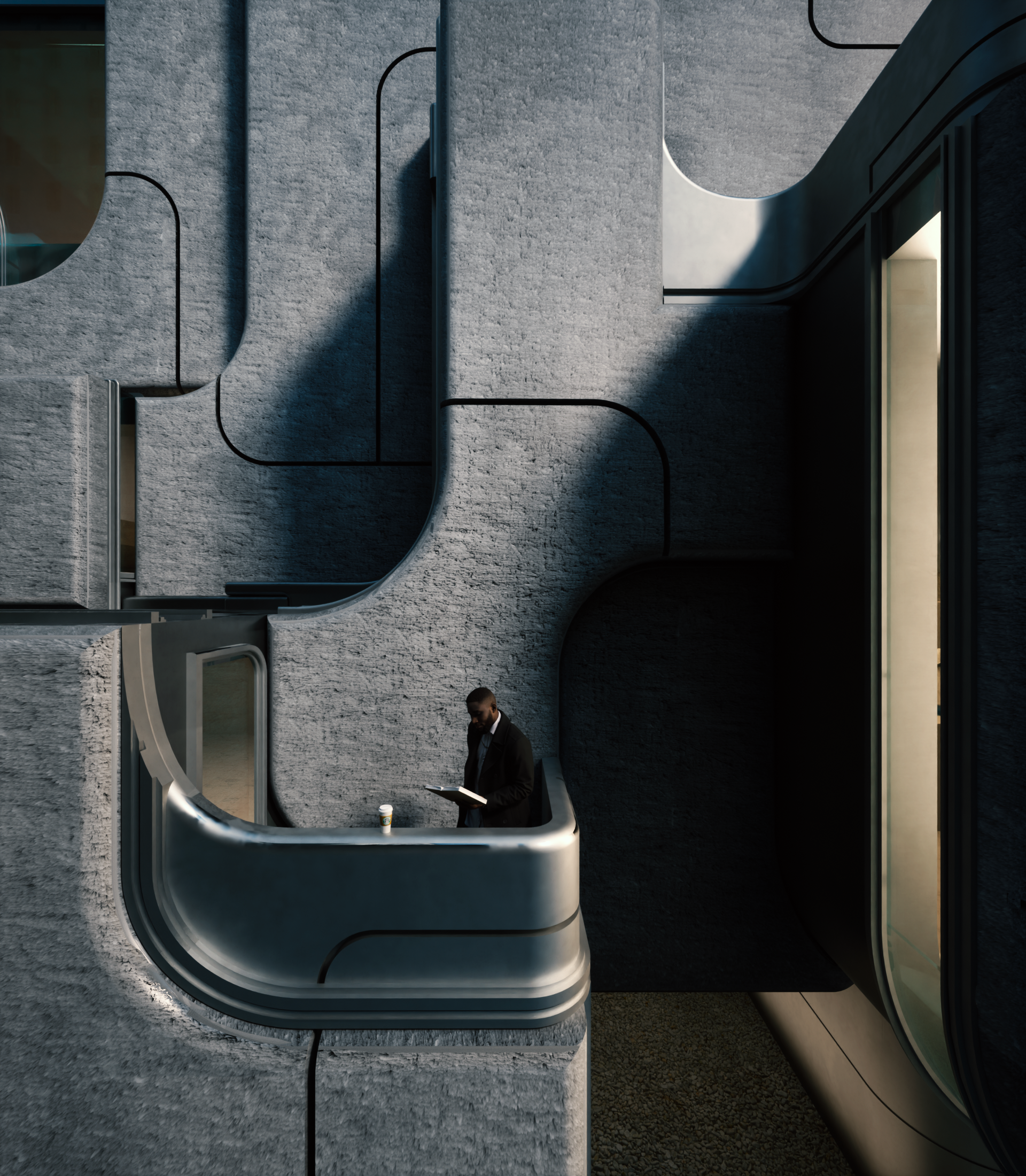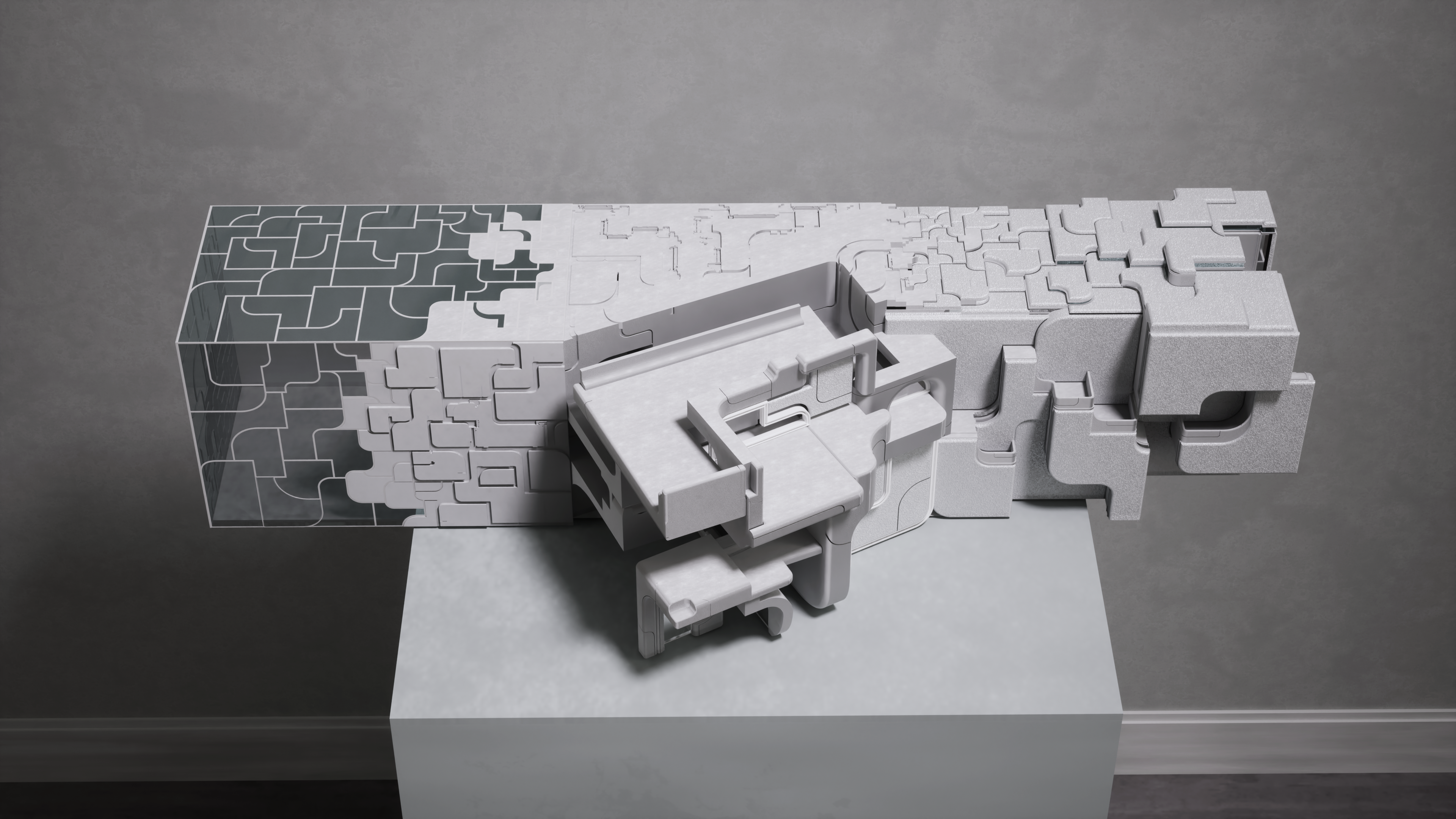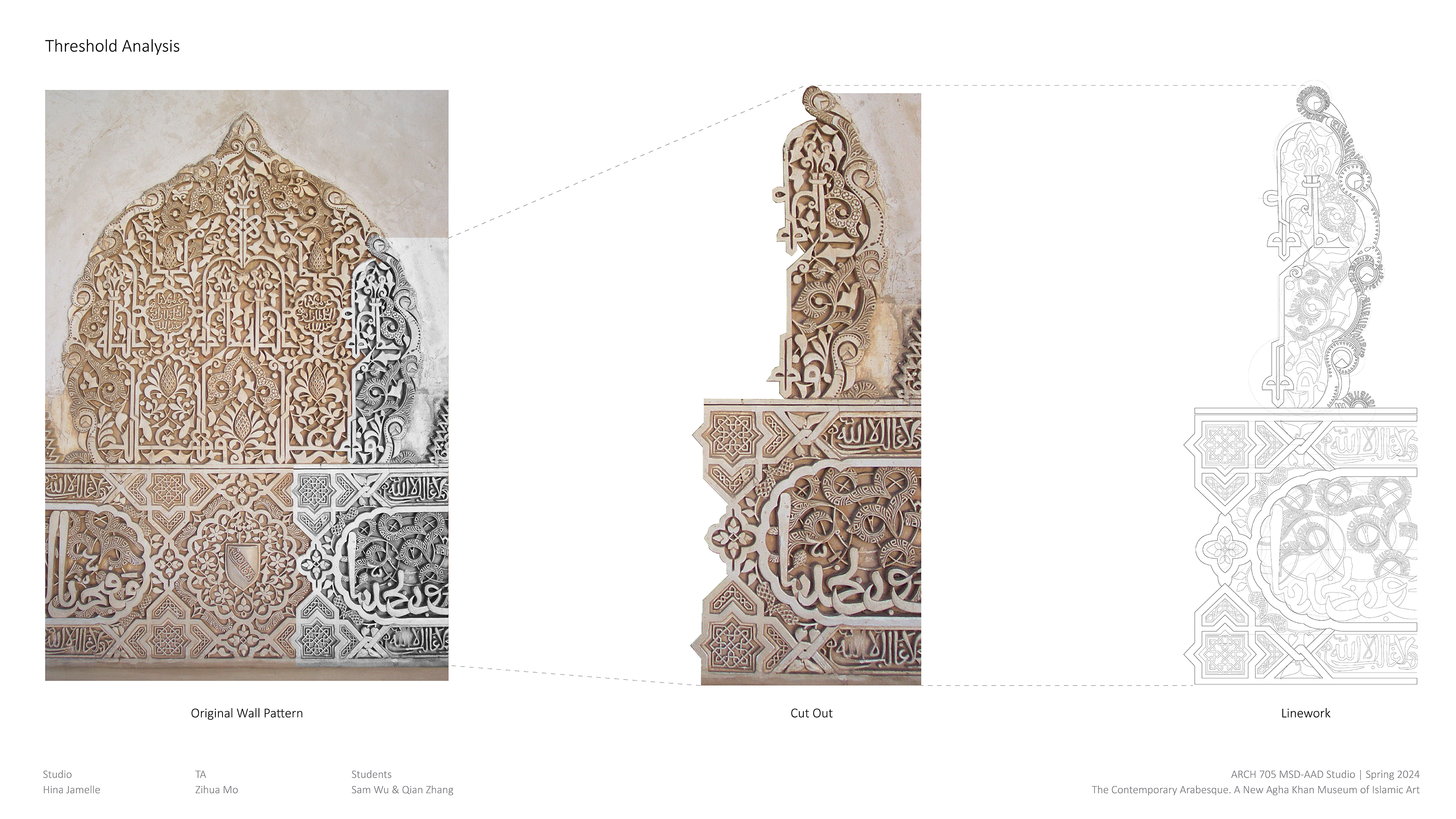New Aga Khan Museum of Islamic Art
1 Chome-9-2 Yurakucho, Chiyoda City, Tokyo 100-0006, Japan
Hina Jamelle - Instructor / Weitzman School of Design, University of Pennsylvania
Ziyuan(Sam) Wu - Building Design + Renderings + Analytical Diagrams
Qian Zhang (Partner) - Physical Model Making
In architecture, the notion of a "threshold" is pivotal, signifying the demarcation or transitional zone between two distinct spaces or volumes. It transcends a mere physical barrier, becoming a crucial juncture for perceiving and navigating spatial transformations. In our project, the threshold concept is interpreted as an intersection and transition point among three different Islamic patterns: geometric, Arabic calligraphy, and floral. These patterns are reimagined as separate volumes, with the threshold acting as the connective element that delineates the commencement and conclusion of spaces, while also modulating the interaction between them.The manifestation of thresholds in our design is expressed through variations in materiality, volumetric displacement, and the modulation of light and shadow. These thresholds can be tangible, such as walls or floors, or intangible, like shifts in sightlines or material transitions. Beyond providing a physical linkage, the thresholds delineate functional distinctions. For instance, different volumes may symbolize diverse functional uses or delineate private and public realms.
The incorporation of thresholds adds depth to the building's facade, enhancing the user experience with layered details. In architectural design, the threshold concept challenges conventional boundaries, introducing innovative design philosophies and construction techniques. Precise design and understanding of thresholds can significantly augment a building's functionality. These areas can become interactive zones, influencing occupants' behavioral patterns and perceptions. The threshold concept can direct the flow of individuals, crafting private or open spaces and enhance the spatial perception by different boundaries. When thresholds function as buffers or separators between functional areas within a building, they facilitate adaptable spaces that can be reconfigured for various occasions and times, enabling the structure to accommodate diverse usage requirements flexibly. Through meticulously designed thresholds, architects can generate captivating visual and tactile effects, contrasting different materials, textures, and colors, as well as the interplay of light and shadow, thereby elevating the architectural aesthetic.
Analytical Diagrams
Physical Model

